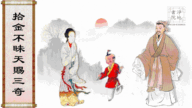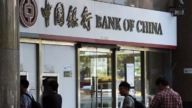【新唐人2013年04月27日訊】這次四川雅安蘆山大地震,再一次把「中國紅十字會」推向風口浪尖。地震發生第二天,社會各界開始捐贈。但是讓「中國紅十字會」萬萬沒有想到的是,當天民間公益機構「壹基金」收到幾千萬善款,而「紅十字會」僅僅募集到三萬多元。而且在它的官方微博上,還收到了無數個「滾」字跟貼。「北京大學」經濟學教授陳浩武建議,「紅十字會」必須退出國家行政系統。
陳浩武在博客中寫道,一個官辦的,依附於權力的、傲慢的、貪腐的、缺乏同情心的慈善機構,招人唾棄是必然的結果。雖然「紅十字會」也在努力抓住這次救災機會改變形象,包括負責人趙白鴿趕赴地震災區第一線。但是「郭美美事件」對中國民眾傷害之深,「紅會」過去形象之爛,恐怕是「紅會」通過自救難以恢復的。
陳浩武認為,應當改造「紅十字會」。他提出三條建議,包括,「紅會」必須退出國家行政系統,退出國家財政預算系統,而成為一個真正獨立的民間NGO組織。
據了解,「中國紅十字總會」由中國國務院領導。
相較之下,歐美各國的「紅十字會」雖然也有半官方組織的色彩,但運作上基本獨立於政府,成員也不靠納稅人養活,更重要的是,它的公信力基礎是自下而上,以志願者為主的救援結構,以及透明、公開、接受監督與約束的運作機制。
陳浩武建議,「新的中國紅十字會」可以從中國和國際社會,吸收一批有威望的社會學家、法學家、經濟學家、倫理學家、知名NGO負責人等等,組成「中國紅十字會委員會」,廣泛吸收民眾智慧。
而「北京外國語大學」國際傳播研究中心主任喬木指出,在國際上,「紅十字會」是一個非政府組織,但在中國的運作,工作人員是官員身份,有編製、有級別。
北京外國語大學副教授喬木:「這個時候,民眾的捐款也罷,最後都匯到政府的賬上。你不知道他到底是政府的撥款,還是民眾的捐款。實際上它是藉紅十字會這個標牌,在跟不同行業組織做一些授權的募捐行動。可能會有一部分進入最終的慈善,但是也可能有相當大的一部分流向了商業用途。這是最讓人詬病的。」
喬木認為,「中國紅會」信譽低下,跟「政府公信力」喪失緊密相連。
喬木:「它現在就是官、企不分。你到底是個企業,還是政府民政部門?再一個就是不透明。它可以藉口你這是一個政府行為或者是公共政策,而不是一個慈善或者福利性的東西。第三,人員的身份也很難定位。它又是運動員,又是裁判員。而且全國大大小小的慈善機構都跟它有千絲萬縷的聯繫,而好多完全來自民間的錢都流向它的腰包。」
此外,喬木指出,「中國紅會」跟國際合作的時候,身份不對等。因為別的國家的「紅十字會」是民間的非營利機構,在中國卻是政府機構。
而陳浩武在博客中寫道,中國現在是唯一一個沒有加入「國際紅十字會」的國家。
不過也有分析人士認為,「中國紅會不是國際紅會成員國」的說法不妥當,因為在1952年7月,「第18屆國際紅十字大會」承認﹕「中國紅十字會是中國惟一合法的全國性紅十字會」。
據了解,「紅十字國際委員會」,是1863年2月創立於日內瓦的國際人道主義組織,是一個獨立、中立的,為戰爭和武裝暴力的受害者,提供人道保護和援助的國際機構。
陳浩武推薦讓中共的「第一夫人彭麗媛」來擔任「紅會領導人」。但是喬木認為,習近平的夫人並不一定是最好的人選,因為她本身的官方背景太明顯,她不但是第一夫人,而且她本身也是軍隊體制內的人。
Should The Chinese Red Cross Continue to Exit?
Once again, the Ya’an-Lushan earthquake has placed the Chinese Red Cross at the forefront of discussions.
The day after the earthquake, various organizations started to make donations.
The charitable organization Foundation One received tens of millions of yuan within one day.
This compares to 30,000 yuan raised by the Chinese Red Cross.
The Chinese Red Cross official website has also received countless “get lost” posts.
Chen Haowu, professor of economics at Peking University, suggests that the Chinese Red Cross must withdraw from the state administrative system.
Chen Haowu commented in a blog.
Chen thinks it is understandable that a state-run charity,
which is attached to power, arrogance, corruption, and lack of compassion, will not be welcome by anyone.
The Chinese Red Cross did try to take this opportunity to improve its image, such as Director Zhao Beigo immediately visiting the quake disaster areas.
However, the Guo Meimei incident has deeply hurt people, and it’s image is irreparable.
Chen Haowu believes that the Chinese Red Cross should be modified.
He suggests that it withdraws from the state administrative system and state budget system.
It should become a truly independent NGO organization.
It is understood that the Chinese Red Cross is under the control of the State Council.
The Red Cross in Europe and the U.S.may be tinged with official colors.
However, they are basically independent,
and staff members do not depend on taxpayers.More importantly, their credibility is built on a volunteer-based rescue structure.
They are open, transparent, and operate under supervision with constraints.
Chen Haowu suggests that the new Chinese Red Cross can recruit a number of new people.
These can include prestigious sociologists,
jurists, economists, ethicists, and well-known NGO people from China and abroad.
They can form a “China Red Cross Committee”, which can extensively absorb wisdom from those people.
Qiao Mu, Director of International Communication Research Center of Beijing Foreign Studies University, commented.
Internationally, Red Cross is an NGO, yet, in China, staff members are all government officials.
Qiao Mu: “Now, it does not matter that the money comes from the public. It all ends up in the government’s account.
You have no idea whether funding comes from the government, or public donations.
Actually, the Chinese Red Cross is only authorizing fund-raising functions to other charitable organizations.
In the end, probably a small portion of donations will go to charity, but a large portion will go to commercial use.
That has been the most criticized issue.”
Qiao Mu believes the Chinese Red Cross’ poor image is closely linked to the government’s lack of credibility.
Qiao Mu: “Now, they mix official with commercial.
Are you a part of the government or an enterprise? It is not transparent.
They can make an excuse, saying that this is a government action, or public policy,
rather than a charitable or welfare issue.
It is also an identity issue, where someone is
both an athlete, and also the referee in a game.
All charitable organizations, large or small, are
inextricably linked to the Chinese Red Cross.
Therefore, a lot of money from
the public falls into its pocket.”
Qiao Mu also points out that the Chinese Red Cross is out of place, compared with its international counterpart.
The Red Cross in other countries is a private non-profit organization, but in China, it is a government agency.
Chen Haowu wrote in his blog that China is now the only country that is not a member of the International Committee of the Red Cross.
However, others point out that Chen’s view is incorrect.
In July 1952, during the 18th International Red Cross Conference, the Chinese Red Cross was confirmed to be a legitimate national Red Cross organization.
It is understood that the International Committee of the Red Cross was
established in February 1863, in Geneva.
It is an international humanitarian organization.
It is an independent, neutral, international agency with the purpose of providing humanitarian protection and assistance to victims of war and armed violence.
Chen Haowu recommends Peng Liyuan, the first lady of China, and Xi Jinping’s wife, to lead the Chinese Red Cross.
However, Qiao Mu does not think Peng is the best candidate.
Peng’s official background is too obvious. She is not only the first lady, but also part of the military system.
























